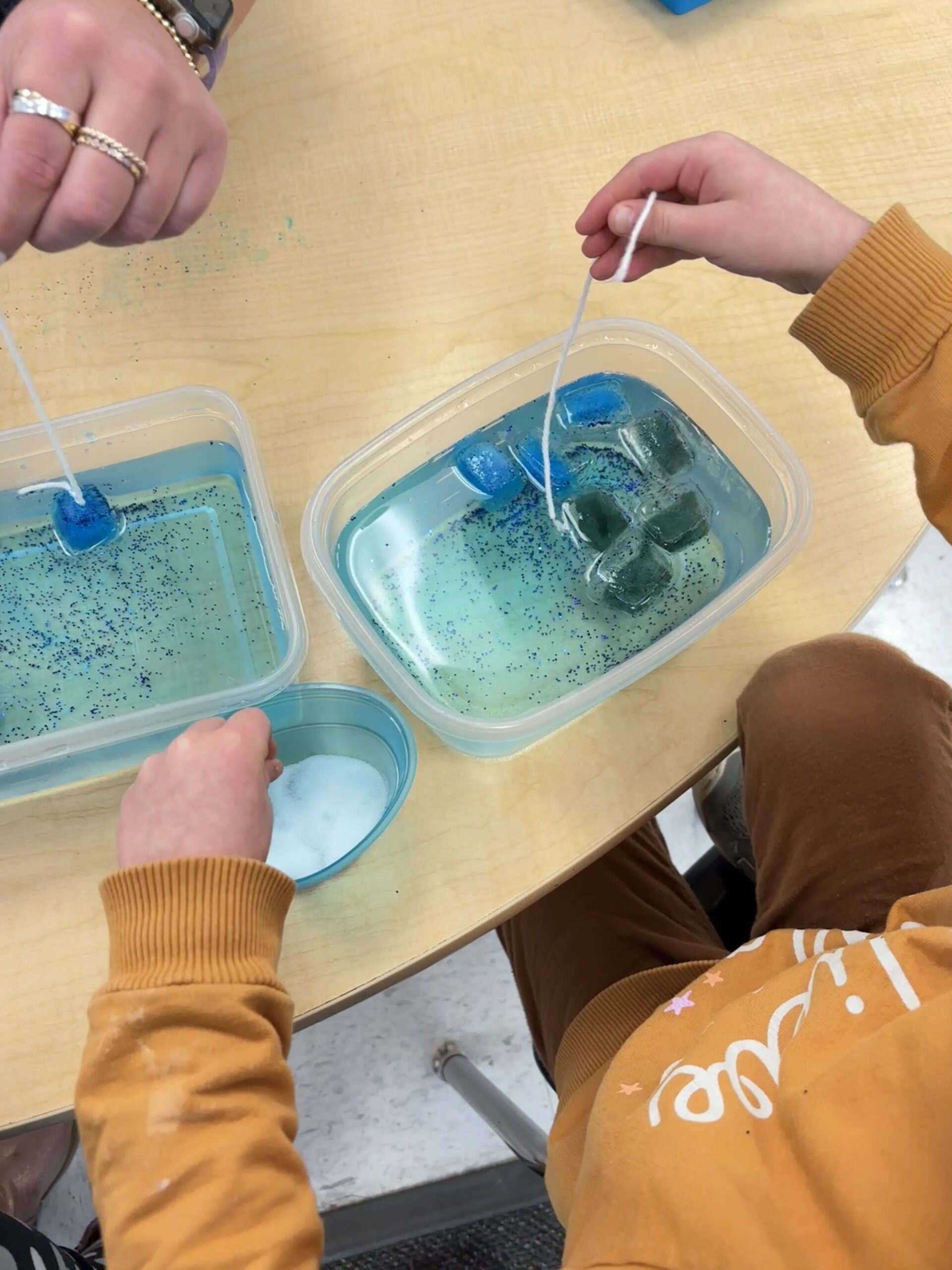Engaging young minds in STEM activities is not only fun but also lays the foundation for understanding scientific concepts. Recently, I had the pleasure of conducting an ice fishing STEM activity with a group of enthusiastic preschoolers that combined creativity, curiosity, and a sprinkle of magic!
This post may contain affiliate links, which means I may receive a commission, at no extra cost to you, if you make a purchase through a link. Please see my full disclosure for further information.


Ice fishing, a popular winter activity, might seem challenging for preschoolers, but with a little twist, it became an engaging learning experience. Instead of chilly lakes and fishing rods, we explored this concept indoors using simple ingredients: ice cubes, food coloring, water, salt, and string.
Fishing Set-Up🧊
The adventure began by mixing food coloring into water and pouring it into ice trays. I added some blue glitter to make it more interesting, but you don’t have to! The anticipation was palpable as we waited for the colorful water to freeze overnight, eagerly envisioning the mini “fish” encapsulated within the ice cubes.


The next day, armed with our ‘fishing poles’ made of strings, we dropped the ice cubes into a cup of water. Excitement filled the air as the kids observed the ice cubes floating, resembling fish swimming in a pond. But here came the twist – the strings alone failed to ‘catch’ the fish.
This moment became the perfect segue into discussing the scientific principle at play. We introduced a pinch of salt into the water, explaining how it affected the ice’s freezing point and created a thin layer of liquid water around the ice cubes.



Catching Our Fish🎣
The magic unfolded before our eyes as the salt began to work its wonders. The string, previously unsuccessful, now adhered to the surface of the ice cubes, allowing the preschoolers to ‘catch’ their ‘fish’ with the string ‘fishing poles.’ Their faces lit up with amazement and joy as they successfully reeled in their colorful ice cube ‘fish!’
This simple yet captivating activity offered multiple learning opportunities. It introduced concepts of freezing points, the effect of salt on ice, and the idea of adapting tools (the string) to solve a problem.


Moreover, it encouraged critical thinking and experimentation as the children hypothesized, tested, and observed the changes in the water’s behavior when salt was introduced. Most importantly, it ignited their curiosity and enthusiasm for exploring scientific phenomena in a hands-on, playful manner.
Through this experience, the preschoolers not only learned about ice fishing but also gained a glimpse into the wonders of science. It’s incredible how a few simple ingredients, a dash of creativity, and the boundless imagination of young minds can turn an ordinary day into a memorable journey of discovery.
As educators and parents, fostering such experiences nurtures a love for learning and sets the stage for a future generation of curious, inventive thinkers ready to explore the world of STEM.
This ice-fishing STEM activity was a reminder that learning is not confined to textbooks but is an adventure waiting to unfold, even in a cup of water with ice cubes! 🧊💦🐟
